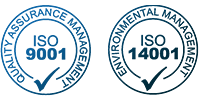We share the latest news and insights surrounding packaging and consumables whilst keeping up to date with the news that matters to us.
Acopia has been supporting leading brands for almost half a century.
We help businesses like yours everyday with sustainable solutions for packaging, process improvement and the supply of everyday essentials and consumables across industry and retail.
A platform we have designed specifically for brands and retailers that want a quick and simple way to manage their packaging, consumables and Goods Not For Resale (GNFR) sourcing and procurement.
Our experts have the experience and insights you help you delve into your existing ways of working and recommend the changes and improvements that can have an enormous impact on productivity and your bottom line.
We support businesses with products that keep you business ready whether it’s the pallet wrap and boxes in your warehouse, the pens in your stationery cupboard or the coffee in your cups.
We have a broad range of packaging solutions to ensure you’re using the right product for your brand and budget.We supply sustainable alternatives without sacrificing performance and the latest packaging machinery.
































Making a positive impact with the sustainable products we both use and supply has always been important to us. Find out more about what we do.
































We share the latest news and insights surrounding packaging and consumables whilst keeping up to date with the news that matters to us.
It’s time to say goodbye to downtime and poor pallet wrap performance iWrap Managed Services is a market-leading service tha…
Read MorePlastic tape has long been a staple in packaging and shipping for retail and ecommerce as it provides a reliable, secure and …
Read MoreTwo things to look at today to start your journey to carbon neutral We all often hear a lot of different terms being u…
Read More